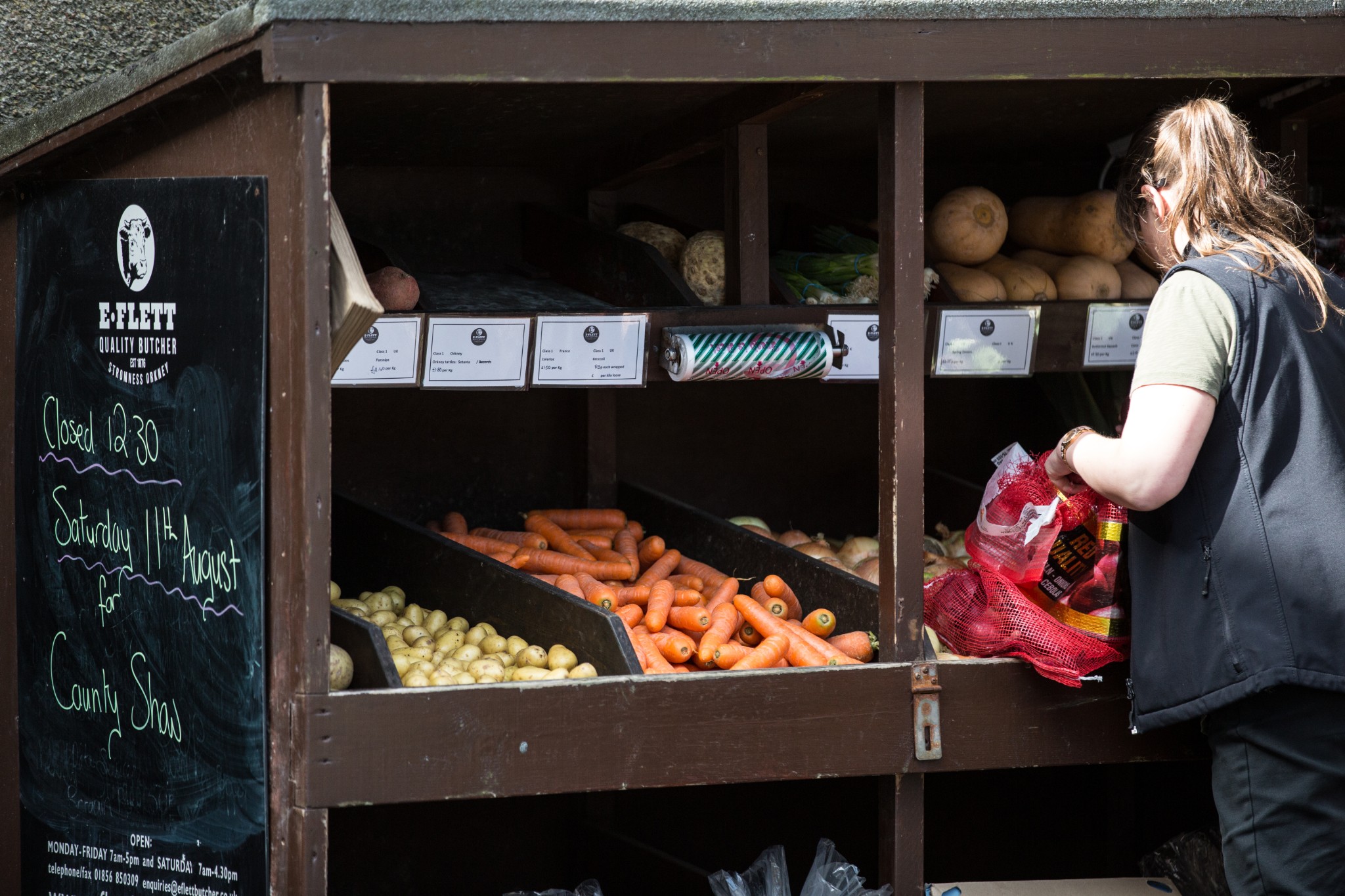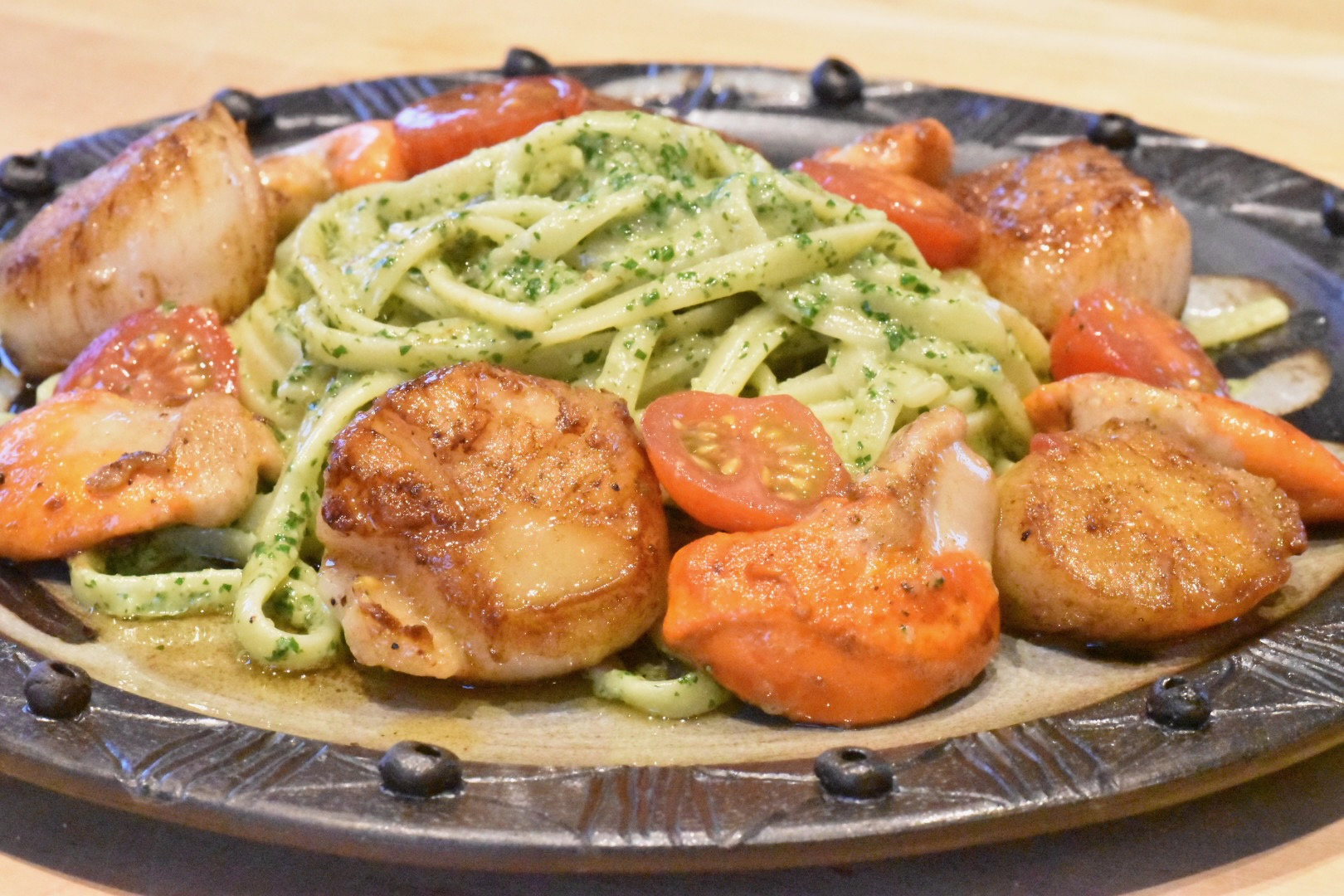Our Orkney food blogger, Rosemary Moon, has been taste-tasting the perfect local ingredients for a romantic meal this Valentine's Day.
The snowdrops are out in Orkney and there's a real feeling spring is on the way. Local shops have been fabulous in keeping us all supplied with a good selection of Orkney-grown veg throughout the winter, with plenty of tatties, carrots, the sweetest of neeps (swedes), caulis, beetroots and sprouts on offer.
The Brig Larder and Shearers in Kirkwall and Flett’s the Butchers in Stromness with their excellent selection of veg don’t let us down.
Local supplies also get to the network of village shops like Baikies Stores in Finstown and the Trading Post and Doull’s in St Margaret’s Hope, where I live. Life in the winter would be much more challenging without our local shops who stock everything from fresh meat to DIY essentials. We are so lucky to have them and please do support them when you are visiting Orkney.
With winter weather in mind, it is a good idea to plan special occasions like a romantic dinner for two on Valentine’s Day with local produce as the main ingredient. My choice this year is scallops.
The islands are famed for them, with many top restaurant and TV chefs raving about the quality and taste of the hand-dived scallops from Orkney waters. A London-based cookery writer friend was telling me about the unbelievable cost of an Orkney scallop starter in a restaurant in St James’, Westminster. Almost £30 for a dish of three discs of scallop: one and a half scallops cut in half - my answer was to simply come here to eat them, they’re less expensive and they will taste even better!
When the divers have collected the scallops, they are kept in seawater tanks in sheds until requested by restaurants, shops or orders come from south. So, there is always a supply of Orkney scallops in Orkney shops for home cooks, and at the fish sheds for the restaurants and hotels here who celebrate them on their menus.
Book into the Lynnfield Hotel or the Foveran in Kirkwall, or any of our smaller hotels and restaurants like The Sands Hotel in Burray and there will usually be scallops on the menu. And they are nearly always on at The Murray Arms in St Margaret’s Hope as the family have their own scallop diving boats.
One thing that many scallop lovers agree on is that frying them with black pudding, although almost the default, ubiquitous way of cooking them, is not the best way to present the sweetness of the meat (yes, they are shellfish but the muscle is referred to as the meat). The spiciness of the black pudding - which I love - does overpower the sweet taste of the sea.
I have been experimenting with different ways of flavouring scallops that won’t over power them. If you are a curry lover, try dusting them with Japanese Katsu curry powder just before frying - it’s mild and adds to the flavour of the scallops, rather than dominating them. Serve with sweet potato mash or neeps bashed with carrots, and spiced cauliflower. I boil the cauli florets for 3-4 mins then fry them in a little butter with turmeric and fennel or fenugreek seeds and black pepper. It’s quick, easy and delicious with the pan juices from the scallops spooned over them.
I think a very romantic dish of scallops is with asparagus and a butter sauce, with chunks of Orkney sourdough to mop up. Although it’s ‘of the moment’ to roast or griddle asparagus I think it is best steamed or blanched in boiling water for this dish as there’s enough butter used in the sauce as it is. Once the scallops are turned in the pan, add about 75g of Orkney butter at room temperature and allow it to melt, then two tablespoons of white wine or tarragon vinegar and seasonings. Allow to blend into an emulsion before plating up and don’t forget the bread!
Or how about a really very simple pasta dish with scallops? If you serve them with some linguine tossed in pesto you will have the pungent cheese/garlic/basil flavours concentrated on the pasta, allowing you to cook the scallops with butter and olive oil to keep their flavour sweet and clean. Some baby tomatoes, halved and added to the scallop pan for just a minute or so gives colour as well as flavour.
I’m a whisky woman and so would take a dram of Scapa or Highland Park with any of these dishes. If you’d prefer wine, pop into the Brig Larder or Kirkness & Gorie in Kirkwall and see what they suggest to go with your dish, or visit the Bayleaf Delicatessen if you are in Stromness - they also have an interesting wine selection.
How to cook the perfect scallops
There are folk that like their scallops almost ‘blue’ - coloured on the surface but very opaque and just warm inside. And then there are those that like them white (cooked) right the way through, although not overcooked. I am in the latter group. The Murray Arms in St Margaret’s Hope serve their scallops more blue - and I suppose they should know as they are scallop divers and many of the divers eat them raw from the shell.
The good thing is that you can actually see the scallops cooking with the colour changing as the heat spreads through them when you are pan-frying them on the hob, so you are in control.
Then there is the question of whether to cook the roe or discard it. I like the roe and leave it on the muscle of the scallop but be warned - it can ‘pop’ during cooking so be prepared for the sudden noise if it happens. I think the roe is tasty and looks good - I don’t really know why some people don’t like it.
- Have your scallops cleaned and ready - this is usually already done for you but check there is no sand left or brown membrane between the roe and the meat. Trim away the little white muscle where the scallop was connected to the shell if this has not already been done. This is for the best possible eating experience!
- Heat your frying pan empty for a minute or two over a medium high heat. Even on an induction hob this is possible. Then add 1 tbsp olive oil and a generous knob of butter together and heat until the butter has melted and the foam subsided. The oil stops the butter from burning. Season the scallops with salt and pepper at the last moment - I often sprinkle them with a little Orkney beremeal to give more of a crust - and then add them to the pan, starting with the largest first.
- Cook over a medium high heat watching the heat spread through them as the colour changes - that’s your guide as to when they are ready to turn according to how you like them cooked and also whether you have the smaller queen scallops or the larger kings. Cooking time is usually only a minute or so on each side if you have the pan hot when you add the scallops - that is THE essential. Turn and cook on the second side then. Serve with the pan juices spooned over.
If making the butter sauce with the asparagus recipe, lower the heat and start adding the butter after the scallops have had about 30 seconds on their second side - they will finish cooking as the sauce melts and emulsifies.
If adding halved tomatoes to the scallop pan to serve with the pesto linguine, add them as you turn the scallops over to cook the second side.
 Rosemary Moon ‘retired’ to Orkney after a long association with the salmon industry in the islands. The author of 19 cookery books and countless more recipes, including writing for Waitrose and Lakeland, she has brought journalists and food writers to Orkney in the past to show off our diverse and delicious food and drink. After several holidays here Rosemary and her husband Nick have settled in South Ronaldsay but, once a cookery writer always a cookery writer, Rosemary is finding it impossible to stop jotting down the new recipes that she is creating with the island produce.
Rosemary Moon ‘retired’ to Orkney after a long association with the salmon industry in the islands. The author of 19 cookery books and countless more recipes, including writing for Waitrose and Lakeland, she has brought journalists and food writers to Orkney in the past to show off our diverse and delicious food and drink. After several holidays here Rosemary and her husband Nick have settled in South Ronaldsay but, once a cookery writer always a cookery writer, Rosemary is finding it impossible to stop jotting down the new recipes that she is creating with the island produce.
Rosemary also writes and vlogs about whisky and is particularly interested in whisky and food matching. You can follow her on Twitter, Instagram and on her rosemarymoon.com.






